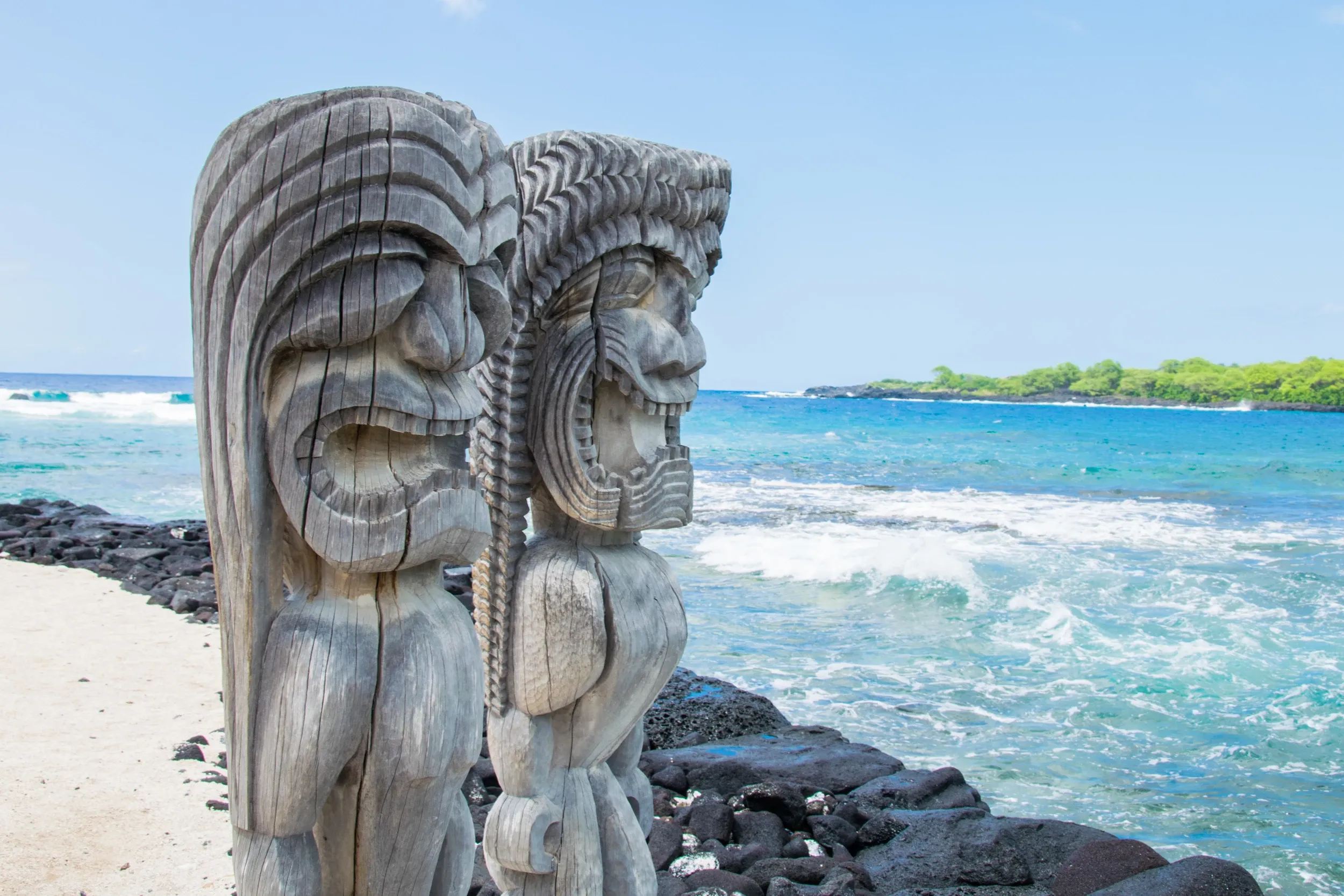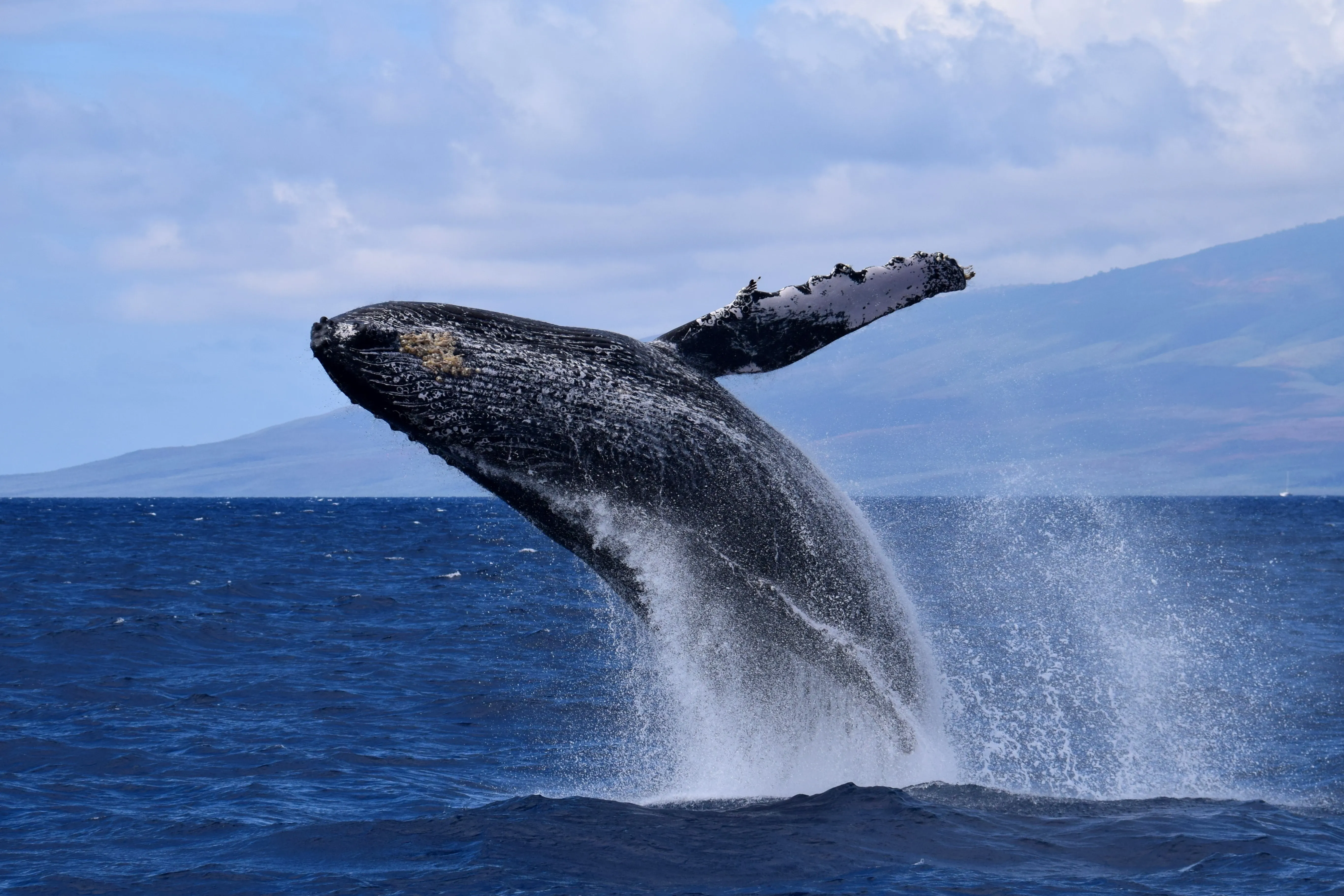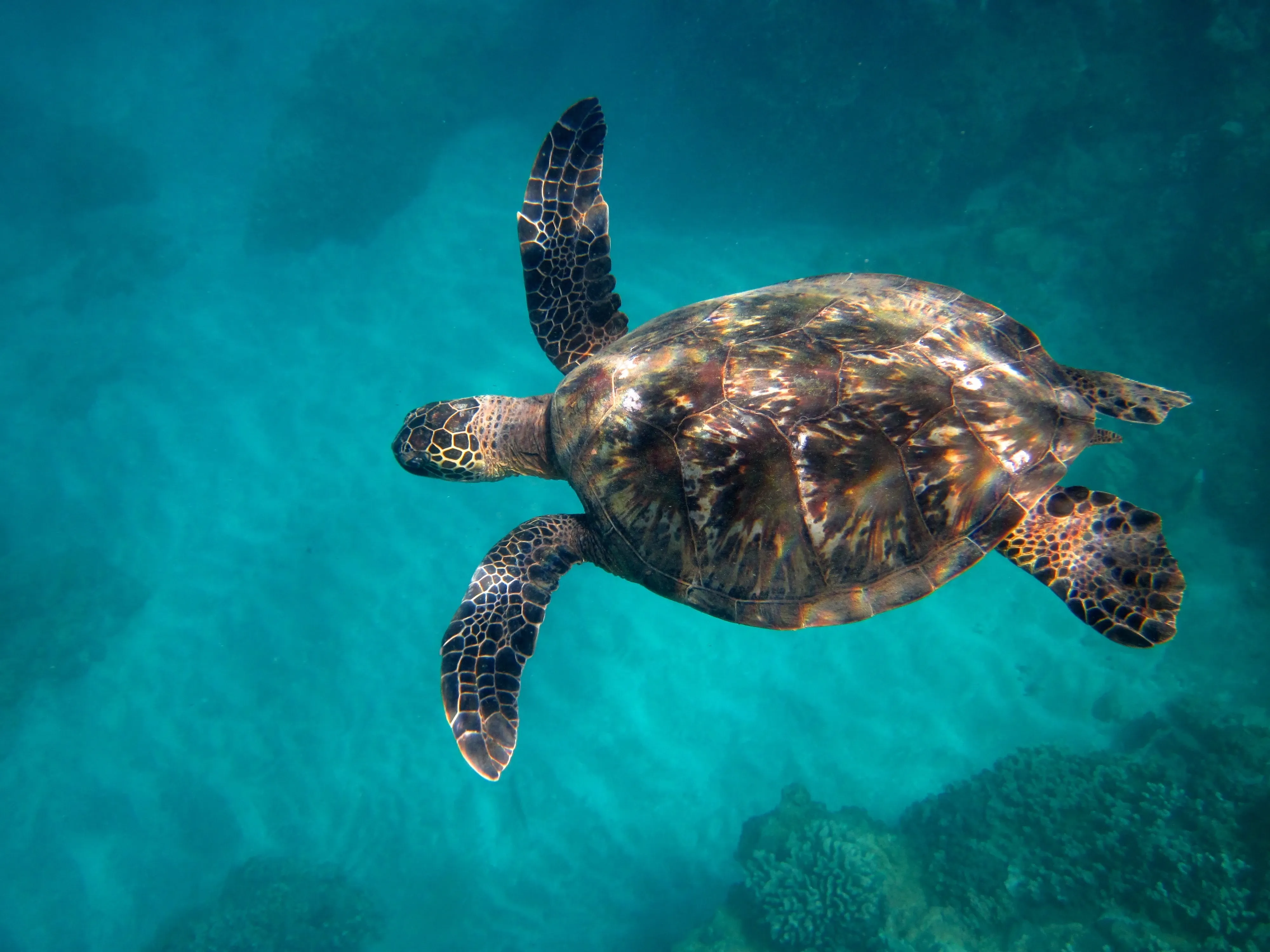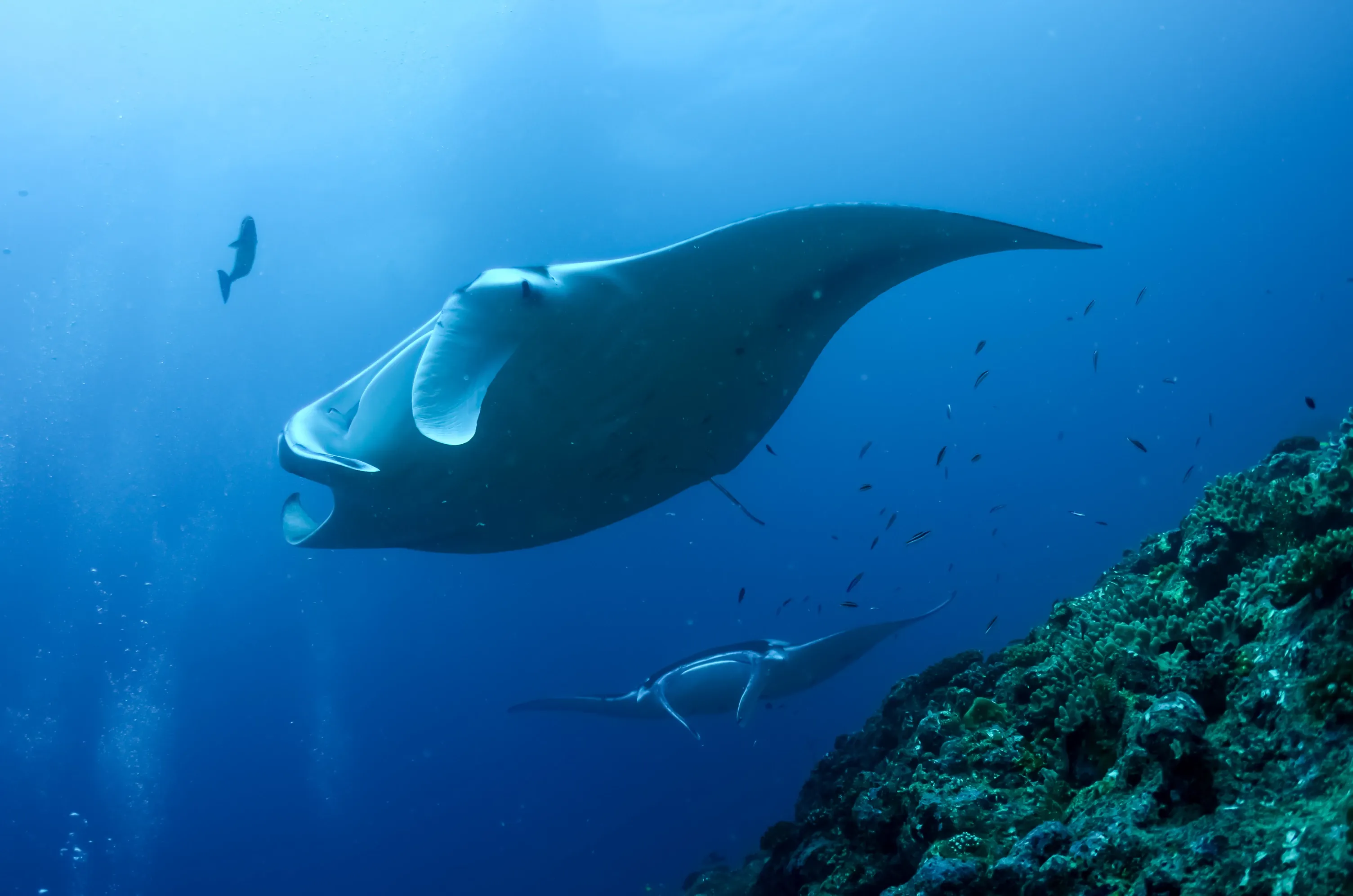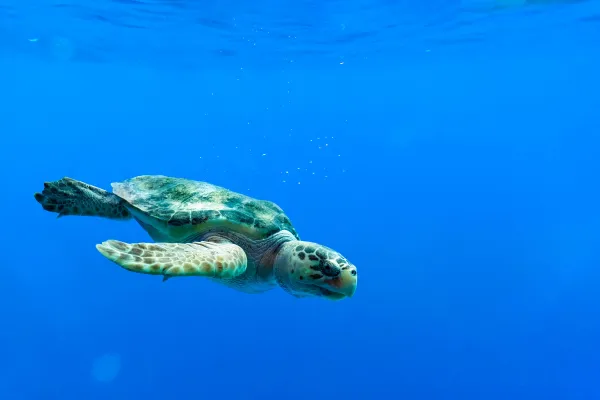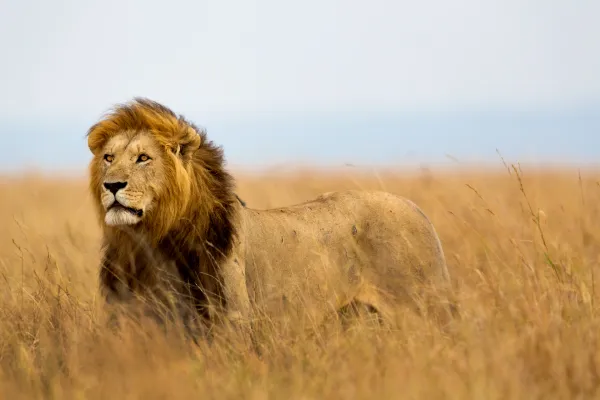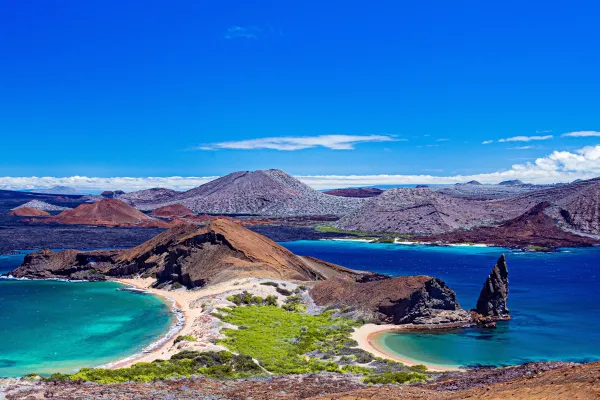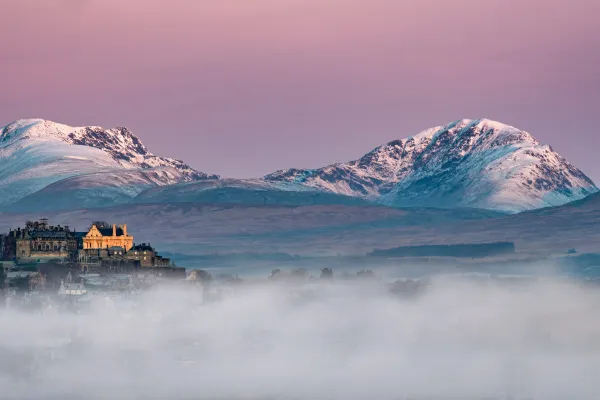Hawaii - Dream travel destination
Hawaii is a lush tropical archipelago in the middle of the Pacific Ocean. Situated almost 4,000 kilometres from the California coast, these volcanic islands have rich and unique animal and plant life on land, as well as in the ocean. Hawaii's coral reefs are undoubtedly exquisite and precious. As an illustration, the island nation's northern region holds the highest recorded percentage of endemic coral species on earth. However, this Pacific paradise is at risk. The influx of tourists visiting the 'Aloha State' has caused a steady increase in marine waste and plastic pollution. Furthermore, the effects of climate change are taking their toll on the environment.
Hawaii nature and wildlife
Eight major islands are strung along the archipelago, including Maui, Oʻahu, and Hawaii (after which the state is named). However, in total, Hawaii is made up of 137 volcanic islands spanning 2,400 kilometres. Its ecosystems are rich and varied. There are snow-capped mountains, tropical rain forests, palm-fringed beaches, and ancient lava fields. Two of the world's most active volcanoes are located at Hawaii Volcanoes National Park, while Mount Waialeale on Kauai is the planet's wettest place.
Because of its isolated position in the Pacific, Hawaii historically had myriad plant and animal species. However, many of these were wiped out when alien vegetation and fauna were introduced to the region. Nevertheless, there are still animals found only in Hawaii today. These include the hoary bat and the Hawaiian monk seal, as well as the nēnē – an extremely rare goose species.
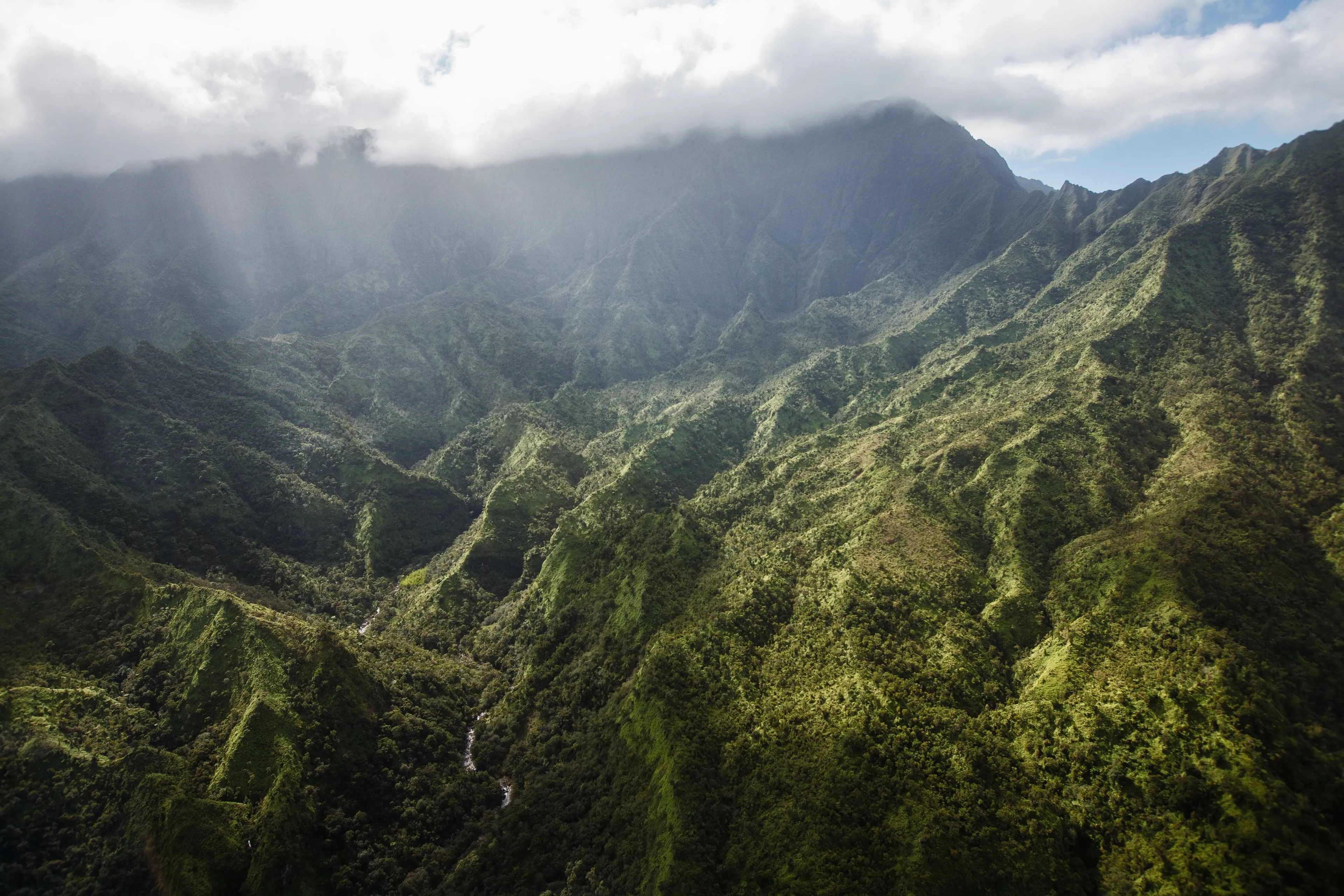
Hawaii culture
The first people who landed on Hawaii's shores were from the Marquesas Islands. Evidently, they travelled over 3,000 kilometres in outrigger canoes from present-day French Polynesia to reach here in the 2nd century AD. Subsequently, the Hawaiians developed their own language and religion. They believe in four gods; Kāne – the God of creation; Kanaloa – the God of the ocean; Ku – the God of war; and Lono – the God of peace, rain, and fertility. However, between 1893 and 1898, a coup saw the Hawaiian queen overthrown, and the islands were designated an additional American territory.
As a result, Hawaii is a melting pot of East and West today. There is a large Asian community, made up primarily of immigrants who moved there to work on the pineapple, coffee, and sugarcane plantations. Additionally, many Americans seeking sunnier skies arrived in the 50th state. There has been an upsurge in reviving traditional Hawaiian culture in recent years. However, for the most part, it has been commercialised for use in tourism, with locals performing lei – flower wreath – ceremonies and hula dancing for visitors. Another popular tradition is a luau, a Hawaiian barbeque featuring local specialities like suckling pig roasted underground.
Hawaii wildlife highlights
Hawaii's sharp volcanic peaks, emerald-green jungles, plunging waterfalls, and sandy beaches are enough to captivate even the most seasoned traveller. However, the region's oceanic wonders are even more spectacular. Beneath the formidable waves that crash along its coast is a world teeming with wildlife. The reefs around the islands are home to more than 1,250 unique species of marine life, including triggerfish, trumpet fish, and manta rays.
From December to May, humpback whales visit these warm waters to mate, give birth, and raise their calves. Spinner dolphins are also a common sight in the protected bays around the islands. During the day, they rest in pods and care for their young. Additionally, the northwestern Hawaiian Islands (America's largest protected area) are home to the Hawaiian monk seal, one of the most endangered seal species in the world. Furthermore, you will find five of the seven marine turtle species here, with hawksbill and Hawaiian green sea turtles most commonly sighted.
Weird and wonderful Hawaii animal facts
- The rarest goose in the world is the Hawaiian goose, or nēnē. It is only found in Hawaii.
- If you see a mongoose while visiting Hawaii, it is not indigenous. The mongoose was introduced to the islands in the late 1800s to combat rats that were feeding on the valuable sugarcane crops.
- The state fish, the reef triggerfish, has an extremely long name in Hawaiian. It is known locally as the Humuhumunukunukuapua'a.
- Spinner dolphins are called spinners because they jump out of the water and spin around. The Hawaiian spinner dolphin is one of four species of these marine mammals in the world.
- Hawaii has no native land mammals except for the Hawaiian hoary bat, a reclusive creature measuring about 11 centimetres in length.
How Hawaii is addressing the risks to wildlife
Over 10 million tourists visited Hawaii in 2019, a state with a population of about 1.4 million. That is an enormous number of people, consumption, and waste. Marine debris has skyrocketed around the islands over the years, but the state has taken precautions to do its part to try to curb the scourge. Additionally, in 2015, Hawaii experienced a dramatic coral bleaching event.
Because of unprecedented high water temperatures, the state tragically lost 30% of its living coral reefs. On the positive side, in 2015, Hawaii became the first US state to ban plastic bags. It was also the first state to outlaw sunscreens containing oxybenzone and octinoxate, a significant move to help protect coral from chemicals that cause bleaching and hinder development. This moratorium is critical to the long-term development of Hawaii's corals because climate change has already affected them dramatically.
To learn more about the future of conservation in Hawaii, you can visit the Hawaii Department of Land and Natural Resources (DLNR) website and The Nature Conservancy - Hawaii website. These organizations are actively involved in various conservation projects in the state. Additionally, the Hawaii Conservation Alliance is a coalition focused on collaborative conservation efforts in Hawaii. For marine conservation, consider the Pacific Whale Foundation, which focuses on protecting marine mammals and coral reefs in the region. For marine conservation, consider the Pacific Whale Foundation, which focuses on protecting marine mammals and coral reefs in the region.
Hawaii is a real dream destination, but should be combined with the protection of nature and the care of the environment and surroundings. Explore this unique country and enjoy its great biodiversity!
Sign up for the newsletter
By clicking on “Subscribe now” I will subscribe to the Conscious Explorer newsletter with all the information about mindful travel. Information on the success measurement included in the consent, the use of the shipping service provider MailChimp, logging of the registration and your rights of revocation can be found in our privacy policy.

